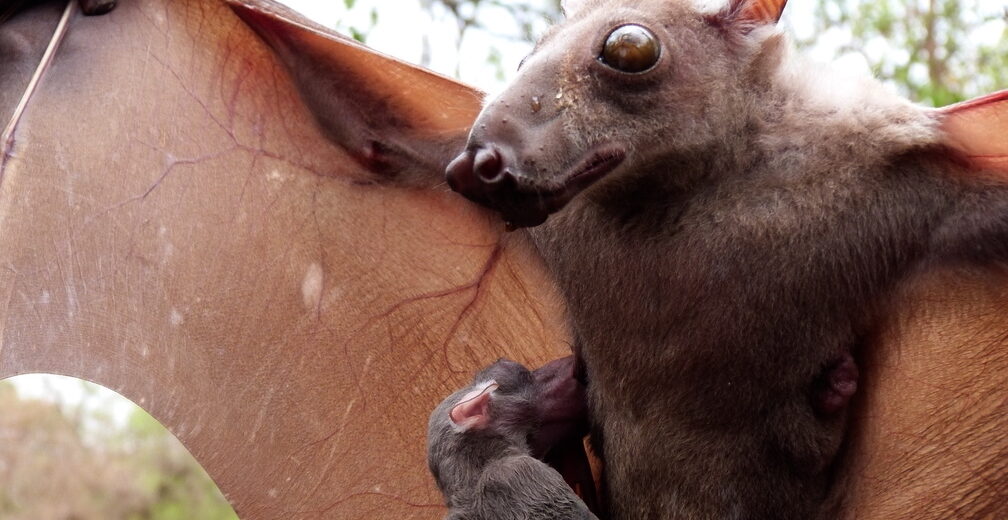
Touting the title of Africa’s largest bat species, of the over 200 known African species, it is the African hammer-headed fruit bat. These big critters aren’t as large as Australia’s flying fox, but they are still pretty impressive. This bat is one of three species of African fruit bat thought to be asymptomatically infected with the Ebola virus. The little-collared fruit bat (Myonycteris torquata) and the Egyptian fruit bat (Rousettus aegyptiacus) are the other 2 species. They’re typically found in lowland tropical moist forests, riverine forests, palm forests, swamp forests, & mangroves where they roost in trees.
First the Stats…
Scientific name: Hypsignathus monstrosus
Weight: Up to 12 ounces
Length: Up to 8.9 inches
Wingspan: Up to 38 inches
Lifespan: Up to 30 years
Now on to the Facts!
1.) This species of bat are sexually dimorphic (males and females look notably different). Males are quite a bit larger than females. Males have a large head with enlarged rostrum (nose), larynx, and lips that allows for their ability to make loud honking calls.
2.) Hammer-headed bats are frugivores (eat fruit).
3.) Figs make up most of the hammer-headed fruit bat’s diet.
4.) Like other bats, these bats are nocturnal (active at night).
5.) Not much is known about reproduction in hammer-headed fruit bats. They have differing mating seasons based on where they live.
But wait, there’s more on hammer-headed fruit bat!
6.) Humans hunt this large bat and consume it as bushmeat.
7.) As of mid 2017, it is not known whether these bats are incidental hosts or a reservoir of the Ebola virus infection for humans and other terrestrial mammals.
Did you know…?
The African hammer-headed fruit bat is known as a pest due to their mass consumption of fruit.
8.) This species is often cited as a classic model of lek mating. In this type of mating system, males cluster in thick groups at certain locations known as mating arenas.
9.) In some populations of bats, males gather along rivers at night and display by rapid wing flapping accompanied by loud vocalizations. An arena may contain from around 25 – 130 males. Females fly through the arena assessing the males. Once the female’s choice is made, the female lands on the branch and sits beside the male. Once chosen, the male emits a buzzing call and copulation (mating) ensues.
10.) Hammer-headed bats are prone to infection not only by mites but also Hepatocystis carpenteri, a protozoan that affects their liver’s function.
Now a Short African Hammer-Headed Fruit Bat Video!
Also, check out the Critter Science YouTube channel. Videos added frequently!
Want to suggest a critter for me to write about? Let me know here.



